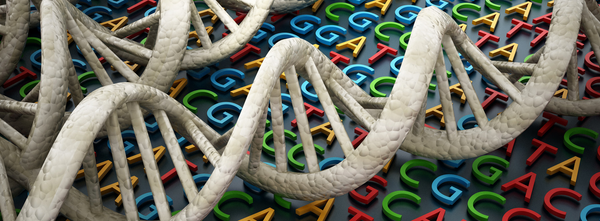In 10 seconds? Certain hair dyes and hair straightening chemicals might increase the risk of certain cancers–particularly for Black women. Scientists believe certain chemicals that impact our hormones, called endocrine disruptors, may be to blame.
What are endocrine disruptors? Our endocrine system produces hormones, which regulate bodily functions ranging from hunger to sexual maturity. Endocrine disruptors, or EDs, are chemicals that interfere with normal functioning of our hormones. EDs are found all over the place–in plastics, food, cosmetics, soaps and hair products. Due to the well-established role of hormones–particularly estrogen–in tumors such as breast, uterine, and ovarian cancer, researchers were interested in investigating if EDs play a role in cancer risk.
How did they study this? To get a better understanding of the risk factors for breast cancer, the US National Institutes of Health led a long-term observational study of over 50,000 women who had a sister diagnosed with breast cancer–called the Sister Study. The researchers administered detailed questionnaires to these women for about a decade and were informed if any of the participants were diagnosed with cancer themselves.
Got it. So what did they find? Permanent hair dye use in Black women, at least once in the past 12 months, was associated with a 45% increased risk of breast cancer among this group. Previous studies that have focused on White women found no increased risk for breast cancer. This may be because hair products marketed to Black women are reported to have higher concentrations of EDs.
I thought correlation didn’t equal causation… You’re right! But while this study is observational (AKA correlative), the link to cancer is logical since EDs commonly found in hair dyes, like 2,4 diaminoanisole sulfate and para-Phenylenediamine, have also been found to induce mammary tumors in rats in certain conditions. Furthermore, Black women who used permanent hair dyes every 5-8 weeks had a 65% increased risk for breast cancer–demonstrating a dose-response relationship between hair dyes and cancer risk. While these findings further the link between hair dyes and cancer, more current and rigorous laboratory studies are needed to strengthen this argument.
Are there any other products people should be wary of? Unfortunately, yes. Data from the Sister Study also linked frequent use of chemical hair straighteners, which contain EDs like formaldehyde and parabens, to a doubled risk of uterine cancers (another type of cancer known to be impacted by hormones). The data showed that while about 1.6% of women who have never used chemical hair straighteners will develop uterine cancer by age 70, about 4% of women who frequently use chemical hair straighteners will develop uterine cancer. This increased cancer risk may also disproportionately impact Black women, who report more frequent use of chemical hair straighteners.
Dang. So what now? Hopefully these findings will encourage more studies to be done to more fully understand the ways EDs may or may not contribute to cancer. Future studies should also include information on the exact products being used to assess which chemicals may be the most problematic. That way, government agencies can regulate these chemicals so that they can’t cause any more harm!
Isn’t it better to be safe than sorry with chemicals?
In theory, sure. But these days it’s not possible to interact with the modern world and not come into contact with EDs, which are found in things like plastics, pesticides, clothes, cosmetics, soaps, many different foods and more.
Beyond cancer, there is evidence that EDs can interfere with other bodily processes like puberty and immunity. Still, with such wide usage of EDs, there is a lot of financial and practical pressures to fully establish a causal relationship between EDs and harmful health outcomes before regulating it.
But research can be effective–one EDs called bisphenol A, or BPA, is no longer allowed to be added to children’s plastic dishware after studies showed its role in causing multiple developmental problems and diseases.
Dr. Talia Henkle has distilled 4 research papers, saving you 14 hours of reading time

The Science Integrity Check of this 3-min Science Digest was performed by Flávia Oliveira Geraldes.






